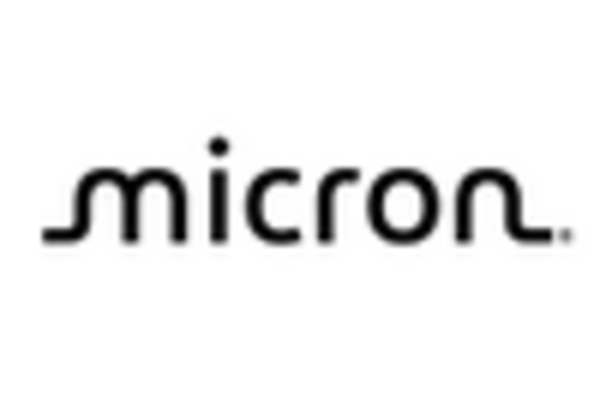Emergence of 5G Technology
The emergence of 5G technology is poised to significantly influence the silicon wafers market in South America. As telecommunications companies invest in infrastructure to support 5G networks, the demand for advanced semiconductor components, including silicon wafers, is expected to rise. By 2026, the 5G market in South America could expand by approximately 20%, necessitating a robust supply of silicon wafers for the production of 5G-enabled devices. This trend suggests that the silicon wafers market will likely experience substantial growth as manufacturers adapt to the evolving technological landscape.
Growth in Automotive Electronics
The growth in automotive electronics is emerging as a significant driver for the silicon wafers market in South America. With the automotive sector increasingly integrating advanced technologies, the demand for silicon wafers is expected to rise. In 2025, the automotive electronics market in South America is anticipated to grow by around 10%, driven by the adoption of electric vehicles (EVs) and advanced driver-assistance systems (ADAS). This trend suggests that manufacturers will require more silicon wafers to produce the necessary components, thereby positively impacting the silicon wafers market.
Rising Consumer Electronics Demand
Rising consumer electronics demand in South America is likely to bolster the silicon wafers market. As disposable incomes increase, consumers are purchasing more electronic devices, including smartphones, tablets, and laptops. In 2025, the consumer electronics market in the region is projected to grow by 12%, which will consequently drive the need for silicon wafers. This growth indicates that manufacturers will need to ramp up production to meet the escalating demand, thereby creating a favorable environment for the silicon wafers market.
Government Initiatives and Incentives
Government initiatives and incentives in South America are likely to play a crucial role in shaping the silicon wafers market. Various countries are implementing policies aimed at boosting local semiconductor production, which includes financial incentives for manufacturers. For instance, Brazil's government has introduced tax breaks for companies investing in semiconductor technology, potentially leading to a 15% increase in local wafer production by 2026. Such initiatives not only encourage foreign investment but also stimulate domestic companies to expand their operations, thereby enhancing the overall market landscape for silicon wafers.
Expansion of Electronics Manufacturing
The expansion of electronics manufacturing in South America appears to be a pivotal driver for the silicon wafers market. Countries like Brazil and Argentina are witnessing a surge in local production of consumer electronics, which necessitates a steady supply of silicon wafers. In 2025, the electronics sector in Brazil is projected to grow by approximately 8%, thereby increasing the demand for silicon wafers. This growth is likely to be fueled by both domestic consumption and export opportunities. As manufacturers seek to enhance their production capabilities, the silicon wafers market is expected to benefit significantly from this trend, as wafers are essential components in various electronic devices.














Leave a Comment